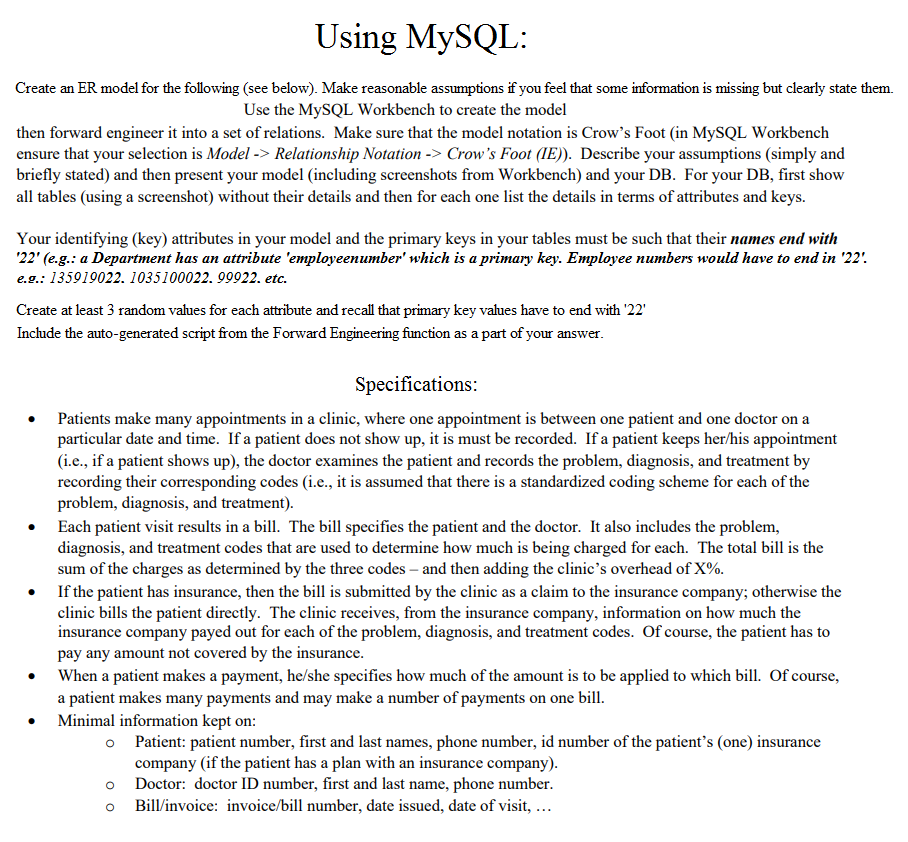
Create an ER model for the following (see below). Make reasonable assumptions if you feel that some information is missing but clearly state them. Use the MySQL Workbench to create the model then forward engineer it into a set of relations. Make sure that the model notation is Crow's Foot (in MySQL Workbench ensure that your selection is Model -> Relationship Notation ->Crow's Foot (IE)). Describe your assumptions (simply and briefly stated) and then present your model (including screenshots from Workbench) and your DB. For your DB, first show all tables (using a screenshot) without their details and then for each one list the details in terms of attributes and keys. Your identifying (key) attributes in your model and the primary keys in your tables must be such that their names end with '22' (e.g.: a Department has an attribute 'employeenumber' which is a primary key. Employee numbers would have to end in '22'. e.g.: 135919022. 1035100022. 99922. etc. Create at least 3 random values for each attribute and recall that primary key values have to end with '22 Include the auto-generated script from the Forward Engineering function as a part of your answer Specifications . Patents make many appointments in a clinic, where one appointment is between one patient and one doctor on a particular date and time. If a patient does not show up, it is must be recorded. If a patient keeps her/his appointment (ic., if a patient shows up), the doctor examines the patient and records the problem, diagnosis, and treatment by recording their corresponding codes (i.c., it is assumed that there is a standardized coding scheme for each of the problem, diagnosis, and treatment). Each patient visit results in a bill. The bill specifies the patient and the doctor. It also includes the problem, diagnosis, and treatment codes that are used to determine how much is being charged for each. The total bill is the sum of the charges as determined by the three codes-and then adding the clinic's overhead of X%. If the patient has insurance, then the bill is submitted by the clinic as a claim to the insurance company; otherwise the clinic bills the patient directly. The clinic receives, from the insurance company, information on how much the insurance company payed out for each of the problem, diagnosis, and treatment codes. Of course, the patient has to pay any amount not covered by the insurance . . . When a patient makes a payment, he/she specifies how much of the amount is to be applied to which bill. Of course, a patient makes many payments and may make a number of payments on one bill Minimal information kept on Patient: patient number, first and last names, phone number, id number of the patient's (one) insurance company (if the patient has a plan with an insurance company) Doctor: doctor ID number, first and last name, phone number Bill/invoice: invoice/bill number, date issued, date of visit,.. o o o







